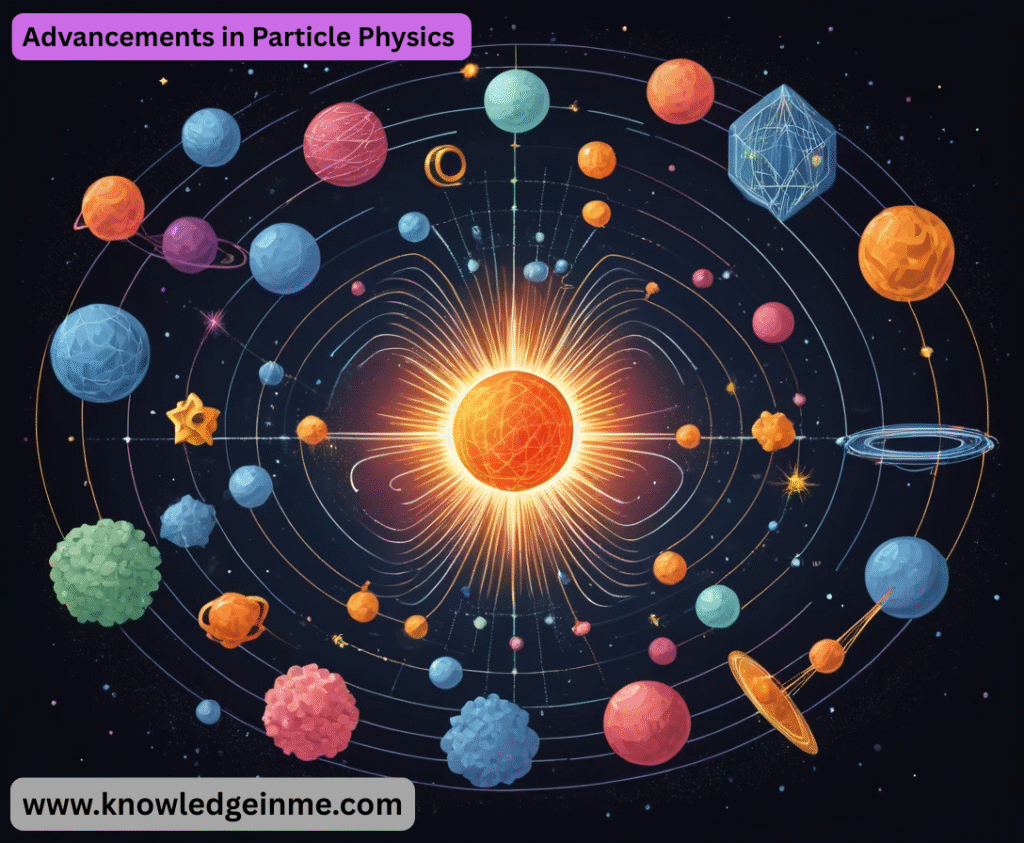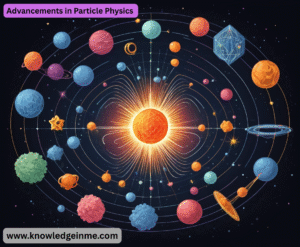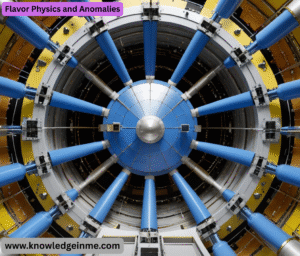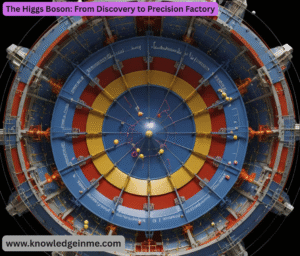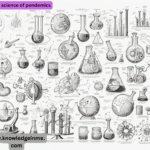Advancements in Particle Physics Of course. The field of particle physics is in an incredibly exciting and Trans formative era. The past decade has seen monumental achievements that have confirmed long-held theories and opened up profound new mysteries. Here is a breakdown of the key advancements in particle physics, from monumental confirmations to the puzzling frontiers.
The Higgs Boson: The Crowning Achievement
- What it is: The Higgs boson is the physical manifestation of the Higgs field, an energy field that permeates the universe. Interaction with this field is what gives fundamental particles (like quarks and electrons) their mass.
- Why it’s a breakthrough: Its discovery was the final, missing piece of the Standard Model of particle physics, the incredibly successful theory describing the fundamental particles and forces (except gravity). It confirmed a mechanism proposed nearly 50 years prior.
- Mass: Its mass is now known to be 125.35 GeV/c² with remarkable accuracy.
- Spin and Couplings: It has been confirmed to have zero spin (a scalar boson) and its interactions (couplings) with other particles like top quarks, bottom quarks, tau leptons, and W and Z bosons have been measured. So far, all measurements align perfectly with Standard Model predictions, which is both a triumph and, for some, a source of frustration (as no “new physics” has been revealed here yet).
The Rise of “Multi-Messenger Astrophysics”
- Particle physics is no longer confined to underground labs. We now observe the universe using “messengers” beyond light.
- Neutrino Astronomy: The IceCube Observatory at the South Pole detected a high-energy neutrino in 2017 that was traced back to a blazar (a supermassive black hole shooting a jet of radiation directly at Earth). This was the first time a neutrino detector was used to pinpoint a cosmic source, launching the era of neutrino astronomy.
- Gravitational Waves: The detections by LIGO and Virgo of gravitational waves from merging black holes and neutron stars have opened a completely new window on the universe. The neutron star merger observation in 2017 (GW170817) was seen by every major telescope across the electromagnetic spectrum, making it a quintessential multi-messenger event. This allows us to study extreme gravity and high-energy particle production in ways never before possible.
Neutrino Physics: Constant Surprises
- Neutrinos are the ghosts of the particle world, and they keep revealing bizarre secrets.
- Neutrino Oscillations Confirmed: Experiments like T2K (Japan) and NOvA (USA) have definitively shown that neutrinos change flavor (electron, muon, tau) as they travel. This phenomenon proves they have mass, which is not predicted by the original Standard Model and is a clear sign of physics beyond it.
- Precision Measurements: The focus is now on precisely measuring the parameters that govern these oscillations (mixing angles, mass splitting) and determining the neutrino mass hierarchy—whether there are two lighter neutrinos and one heavier, or vice versa. Experiments like JUNO (China) and DUNE (USA, under construction) are designed to solve this puzzle.
- Sterile Neutrinos? Several anomalous results (e.g., from the LSND and Mini Boone experiments) have hinted at the existence of a fourth, even more elusive type of neutrino—a “sterile” neutrino that doesn’t interact via the weak force. This remains a major unsolved mystery and a hot topic of research.
Flavor Physics and Anomalies
- While the LHC hasn’t found dramatic new particles like supersymmetry yet, hints of “new physics” are emerging from studying the decay rates of known particles.
- B-Physics Anomalies: Experiments like LHCb at the LHC, along with Belle II, have observed slight but persistent deviations from the Standard Model in how certain beauty quarks decay. For example, the ratio R(K) and similar measurements involving leptons show a tension with predictions.
- The Muon g-2 Experiment: A precise measurement of the muon’s magnetic moment at Fermilab (Muon g-2) confirmed an earlier anomaly from Brookhaven Lab. Its value disagrees with the Standard Model prediction with a significance of over 4 sigma (strong evidence, but not yet a 5-sigma discovery). This could be a sign of unknown particles influencing the muon.
- These “anomalies” are not yet discoveries, but they are the most promising clues physicists have for finding physics beyond the Standard Model.
Technological Advancements Enabling Discovery
The science is driven by breathtaking technology.
- Its high-luminosity upgrade (HL-LHC), scheduled for the late 2020s, will crank up the number of collisions by a factor of ten, allowing for unprecedented precision measurements.
- Detectors: Advances in silicon tracking, calorimetry, and trigger systems allow physicists to reconstruct billions of collision events per second.
- Computing and AI: The field is utterly reliant on immense grid computing and, increasingly, machine learning and AI to sift through the enormous datasets to find the incredibly rare “needles in a haystack” that signify new physics.
The Future: What’s Next?
The current era is defined by precision and mystery. The next advancements will come from:
- The High-Luminosity LHC (HL-LHC): Starting ~2029, it will push the energy and intensity frontier further than ever before.
- Next-Generation Experiments: DUNE (for neutrinos) and LISA (for gravitational waves in space) will come online in the 2030s, revolutionizing their fields.
- The Future Circular Collider (FCC): A proposed 100-km circumference collider at CERN that would first collide electrons and positrons to study the Higgs with pristine precision, and later protons to reach energies far beyond the LHC.
- Dark Matter Direct Detection: Experiments like LZ and XENONnT are becoming sensitive enough to potentially detect Weakly Interacting Massive Particles (WIMPs), a leading dark matter candidate. Their failure or success will dramatically shape the field.
The Higgs Boson: From Discovery to Precision Factory
The initial discovery was just the beginning.
- Rare Decay Channels: Physicists are now measuring how the Higgs decays into increasingly rare particles, like second-generation muons and the elusive charm quarks. Any deviation from the predicted rates would be a monumental sign of new physics.
- Self-Interaction: The Holy Grail of Higgs studies is measuring the Higgs self-coupling—how the Higgs boson interacts with itself. The HL-LHC will get a first glimpse, but a full measurement requires a future collider.
- Precisely measuring this Yukawa coupling tests the core mechanism of how particles get mass.
The Anomaly Frontier: Cracks in the Standard Model?
The B-Physics Anomalies (continued):
- Lepton Universality: The core idea tested is “lepton universality”—the Standard Model prediction that the Higgs and weak force couple to electrons, muons, and tau leptons with equal strength. The anomalies in B-meson decays (e.g., R(K), R(K*)) suggest this might not be true, hinting that muons are behaving differently than electrons in these rare processes.
- Possible Explanations: Theorists have proposed new fundamental particles, like Leptoquarks or Z’ bosons, that could preferentially interact with different lepton generations and explain these results. The data is not yet conclusive, and more data from LHCb and Belle II is critical.
The Muon g-2 Anomaly (continued):
- The Measurement: The experimental value of the muon’s magnetic moment is now measured with stunning precision at Fermilab and is significantly higher than the Standard Model prediction.
- The Tension: The plot thickened when a 2023 lattice QCD calculation using supercomputers agreed more with the experimental value than with the traditional theoretical prediction. This has sparked a fierce debate within the community: is this a sign of new physics or a need to recalculate the Standard Model prediction more accurately? This is a beautiful example of how experiment and theory push each other forward.
The Neutrino Revolution: Shaping the Next Decade
- The Mass Hierarchy Problem: Determining the ordering of the neutrino masses is a primary goal. Is it Normal (m3 heaviest) or Inverted (m3 lightest)? The huge JUNO experiment in China, a liquid scintillator detector of incredible precision, is designed to resolve this definitively.
- CP Violation: Did neutrinos play a role in why the universe is made of matter and not antimatter? The Deep Underground Neutrino Experiment (DUNE) (under construction in the US) will fire a neutrino beam from Fermilab to a massive detector 1300 km away in South Dakota. Its primary goal is to see if neutrinos and antineutrinos oscillate at different rates—a phenomenon called CP violation—which could help explain the matter-antimatter asymmetry of the universe.
- The Nature of the Neutrino: A fundamental question remains: Is the neutrino its own antiparticle (a Majorana particle)? Experiments like LEGEND and nEXO (looking for neutrinoless double-beta decay) are trying to answer this. A discovery would be Nobel Prize-winning and rewrite textbooks.

